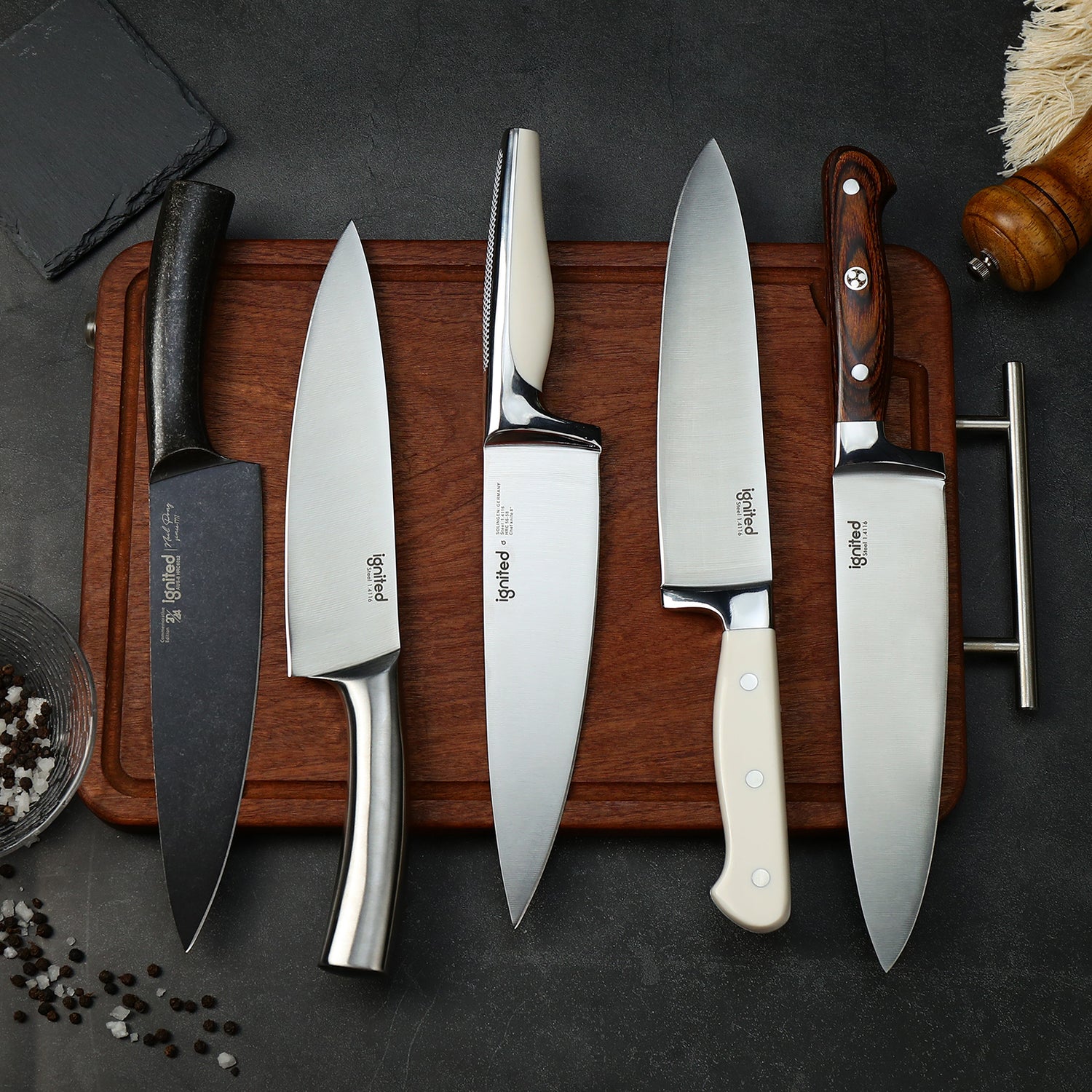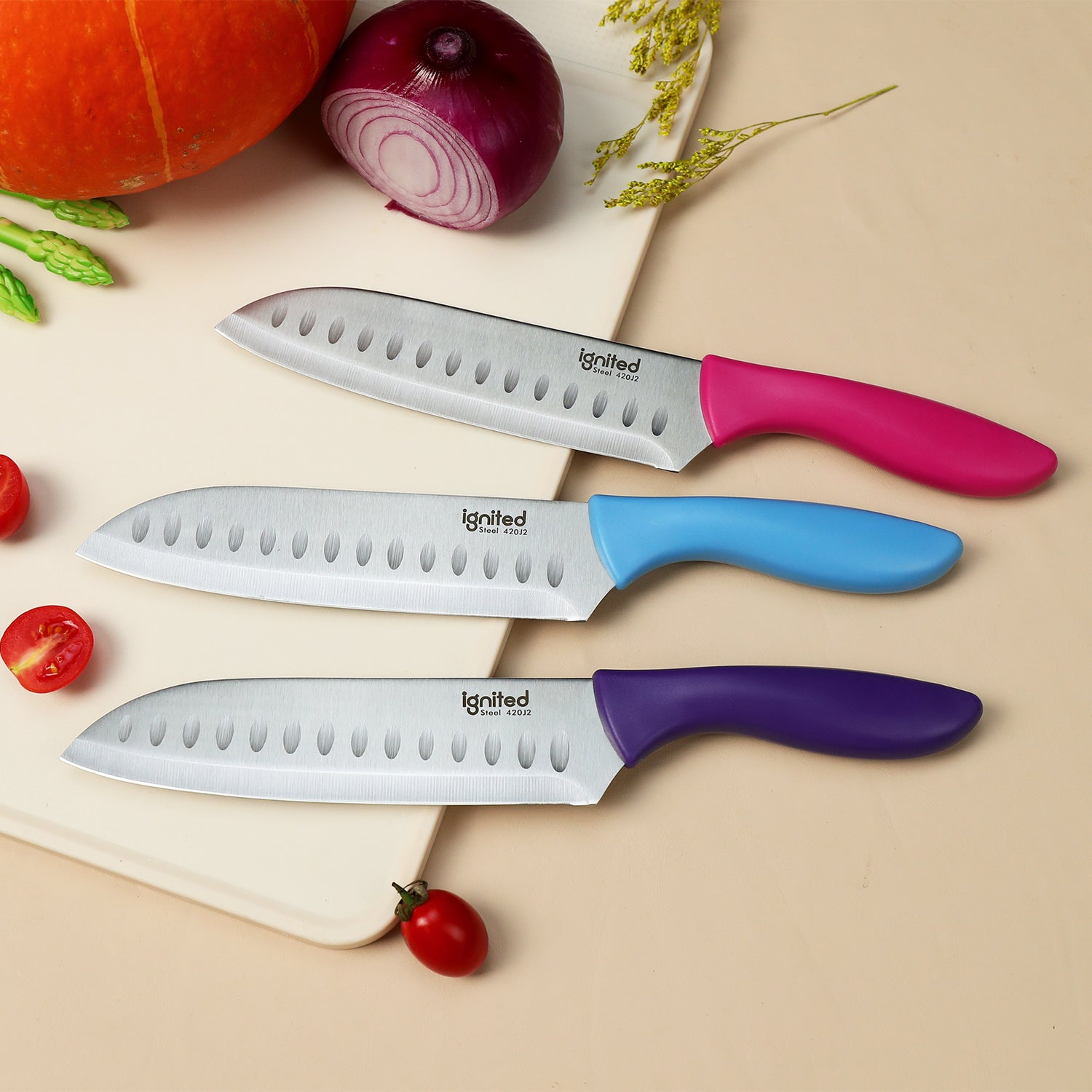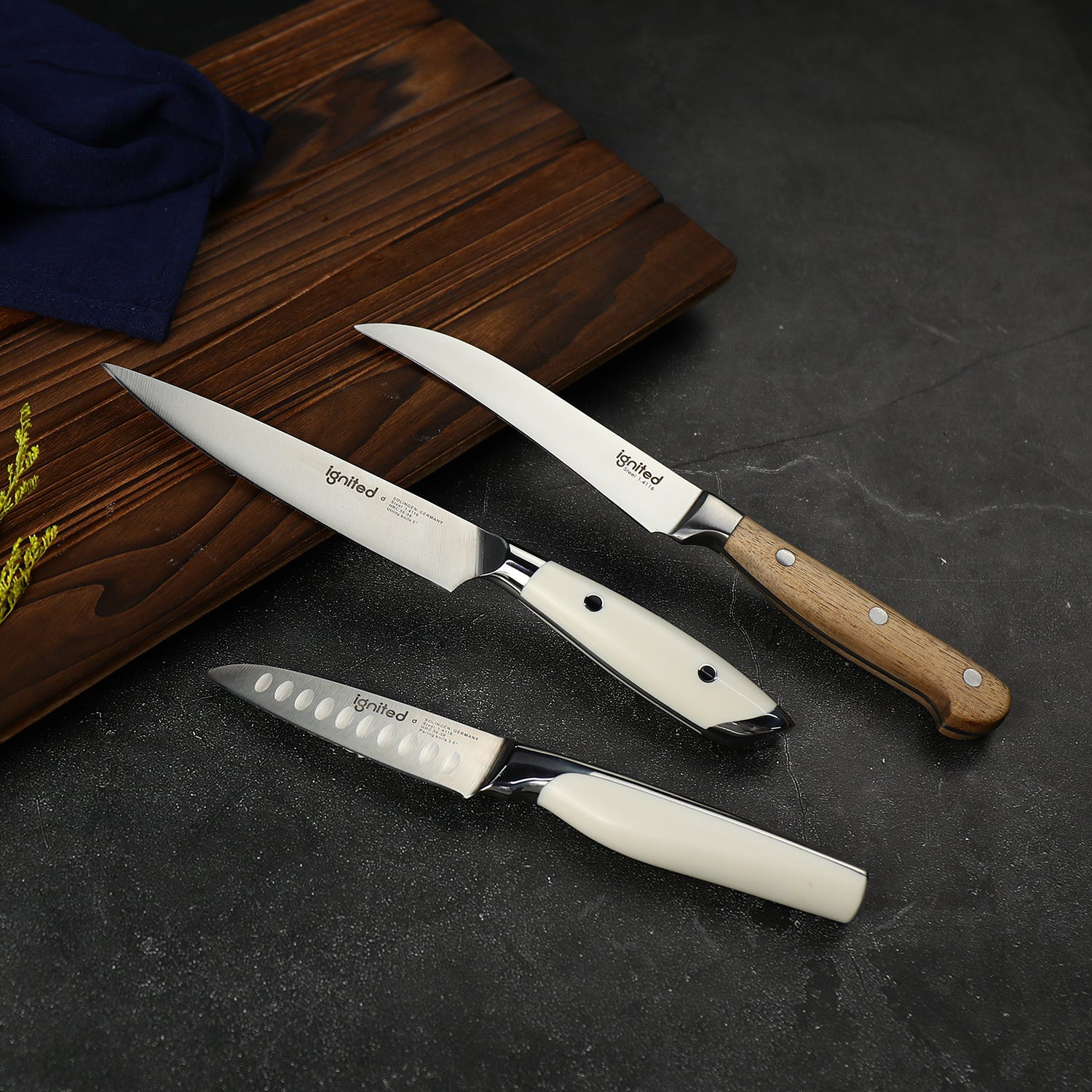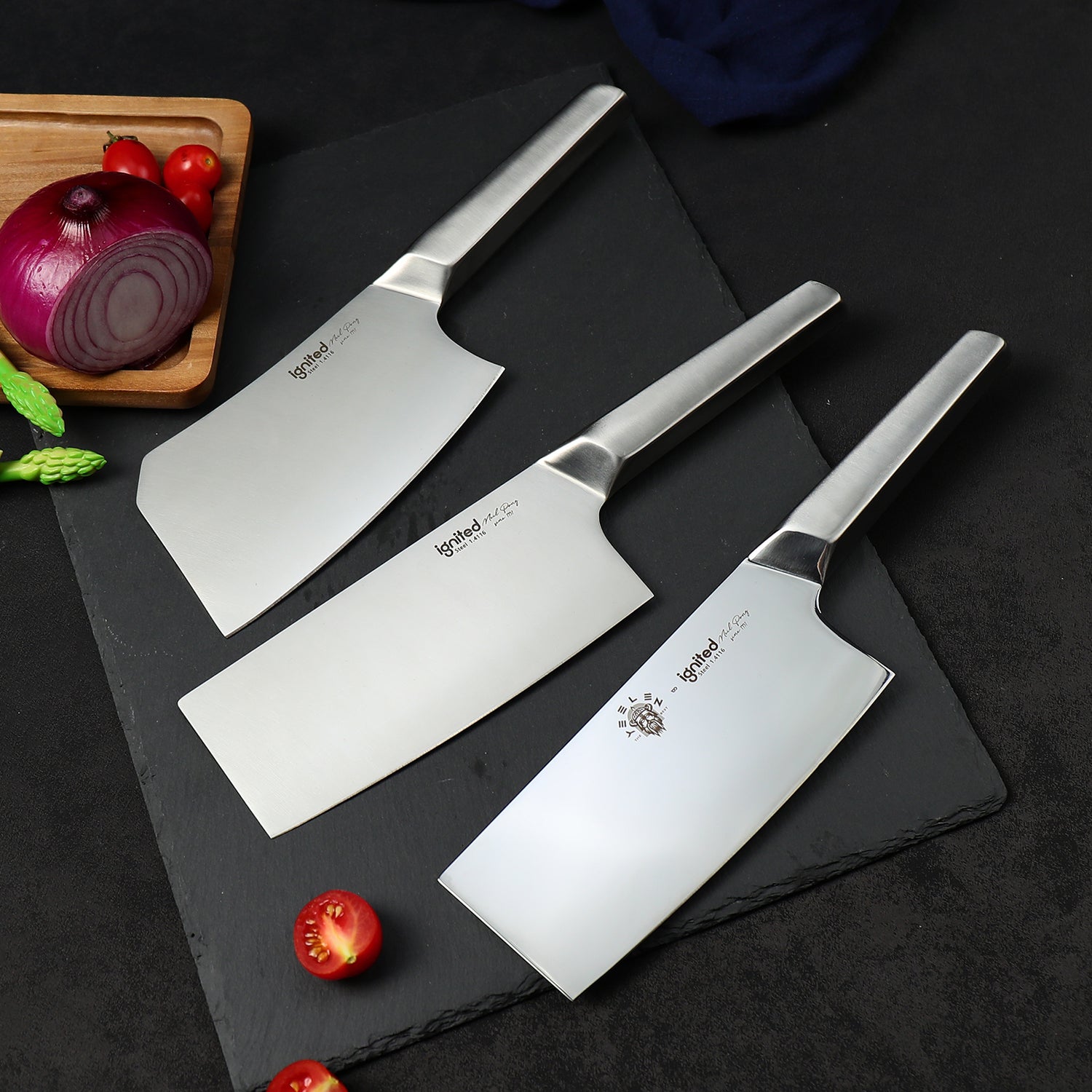Introduction
When it comes to selecting the perfect chef knife, size matters more than most people think. The right blade length not only enhances comfort and control but also impacts efficiency and safety. While 8-inch chef knives dominate the kitchen landscape, they are not a one-size-fits-all solution. So, how do you determine the best size for your needs?
This guide explores different chef knife sizes, their use cases, pros and cons, and how to make the right choice based on your hand size, kitchen space, and cooking habits.
Common Chef Knife Sizes (and What They’re Best For)
| Blade Length | Description | Best For |
|---|---|---|
| 6 inches | Compact and easy to maneuver | Small hands, precision tasks, limited kitchen space |
| 7 inches | Versatile and balanced | General home cooking, balanced control and utility |
| 8 inches | Standard all-purpose size | Everyday cooking, slicing, dicing, chopping |
| 9–10 inches | Professional-grade, extended reach | Larger volumes, big ingredients (melons, cabbage, meat) |
| 12 inches+ | Specialized, very large tasks | Butchery, catering, industrial kitchens |
Why Size Affects Performance
✅ Control and Maneuverability
Shorter blades (6–7 inches) are easier to handle for delicate work like mincing herbs, slicing small fruits, or peeling. They’re also ideal for smaller cutting boards or cramped kitchens.
✅ Power and Efficiency
Longer blades (9–10 inches) allow you to cut through larger ingredients in fewer strokes, ideal for high-volume prep or large meat cuts. However, they may feel unwieldy for beginners or cooks with smaller hands.
How to Choose the Right Size for YOU
1. Hand Size
- Small hands: 6–7 inch knives offer better grip and control.
- Medium to large hands: 8–10 inch knives feel more natural and offer broader versatility.
2. Cutting Style
If you prefer rock chopping (rolling motion), a longer curved blade (8–10 inch) helps maintain the rhythm. If you favor precision cuts, like slicing garlic thinly or trimming fat, shorter blades give you better feedback and control.
3. Kitchen Space
Smaller knives are safer and easier to use in tight spaces. Larger knives need more room to maneuver, especially on smaller cutting boards.
4. What You Cook Most Often
| Cooking Habit | Ideal Size |
|---|---|
| Lots of vegetables | 8–10 inch blade |
| Small fruit, herbs | 6–7 inch blade |
| Large meat cuts | 9–12 inch blade |
| General home cooking | 7–8 inch blade |
What About Utility or Santoku Knives?
If you find 8-inch knives too bulky, consider a 5–7 inch Santoku or utility knife. These offer excellent control and are often more beginner-friendly while still being versatile for most daily tasks.
Final Thoughts: Try Before You Buy
There’s no substitute for picking up the knife and holding it. The balance point, blade height, and grip feel are just as important as blade length. If possible, visit a kitchenware store or try different sizes from friends or family to find your personal sweet spot.
Conclusion
There is no perfect chef knife size for everyone—but there is a perfect size for you. By considering your hand size, cooking style, kitchen space, and food preferences, you can select a knife that feels like a natural extension of your arm. Whether it’s a nimble 6-inch or a powerful 10-inch blade, the right size will transform the way you cook.




